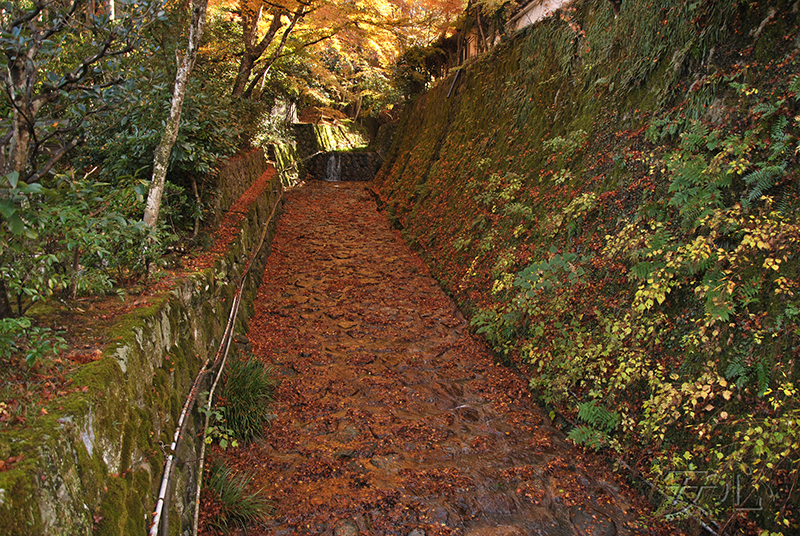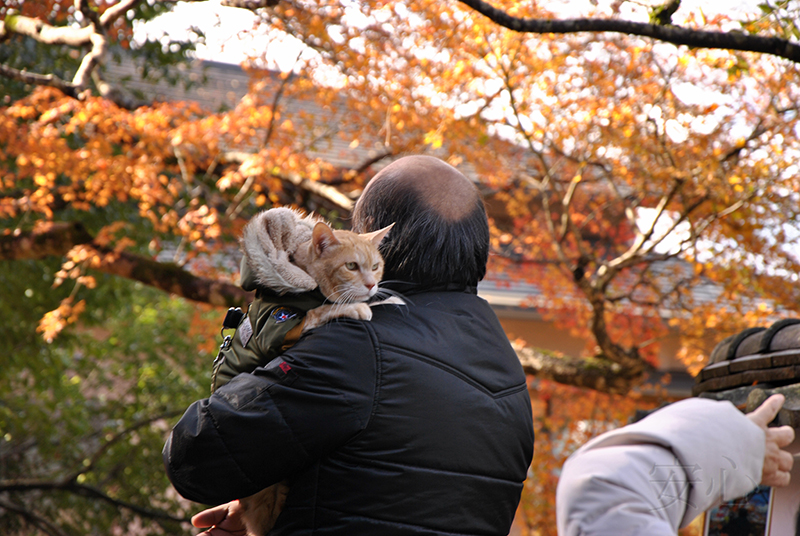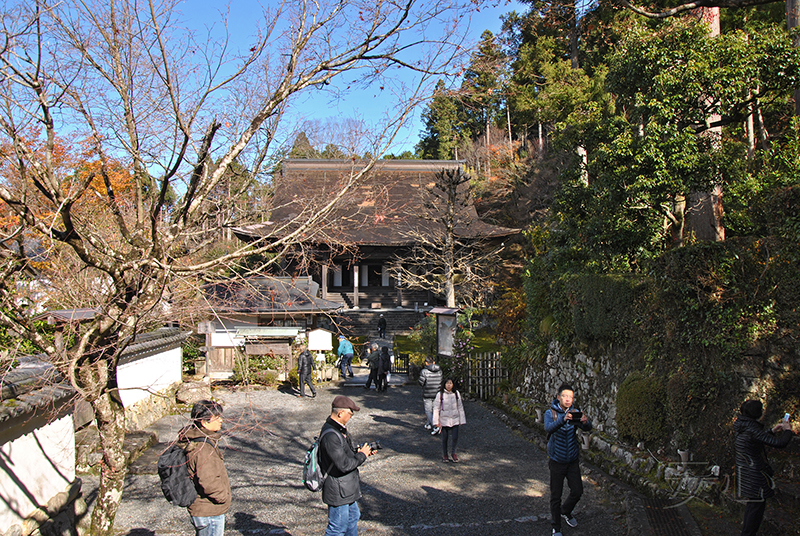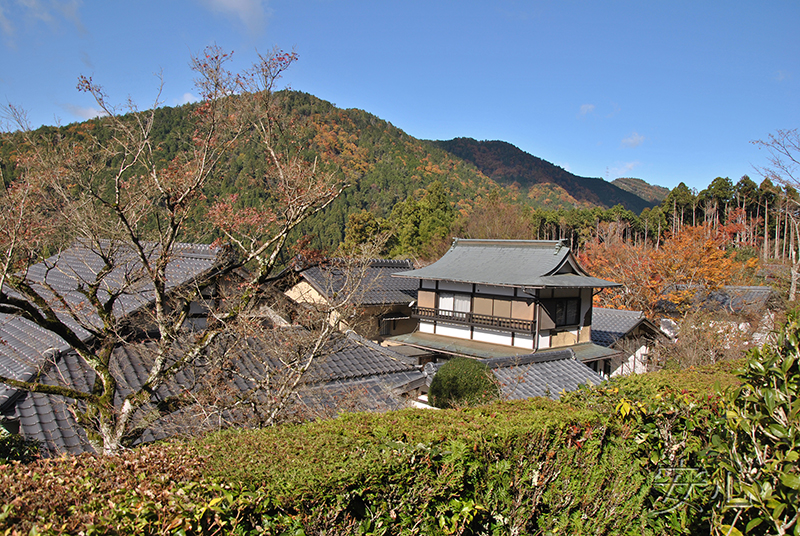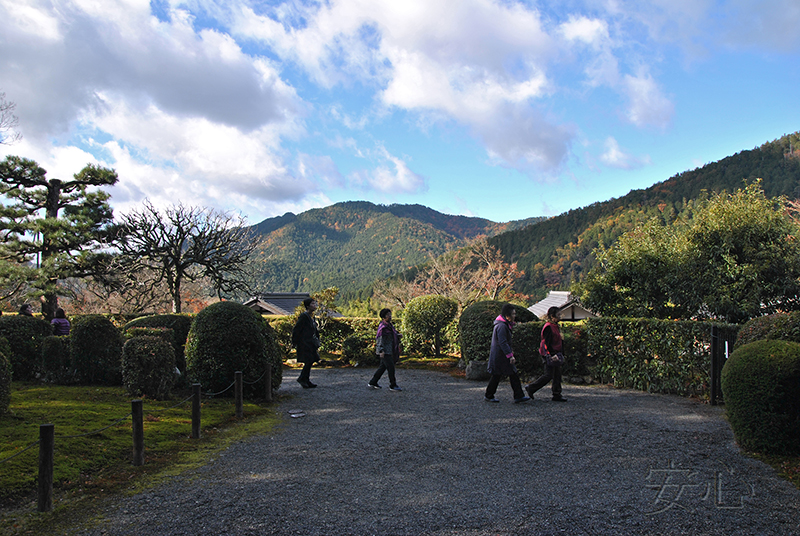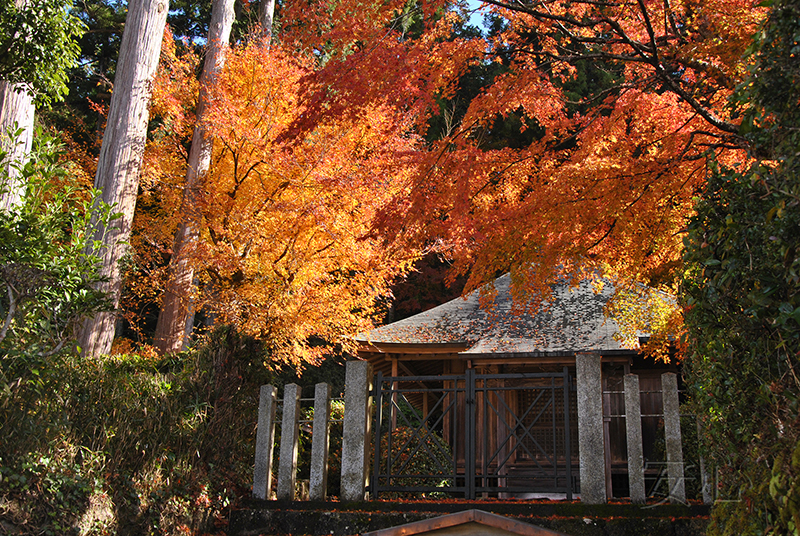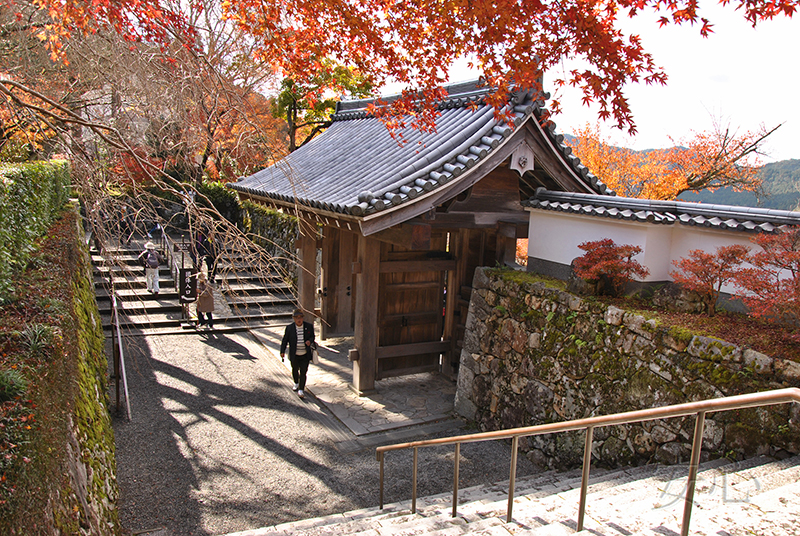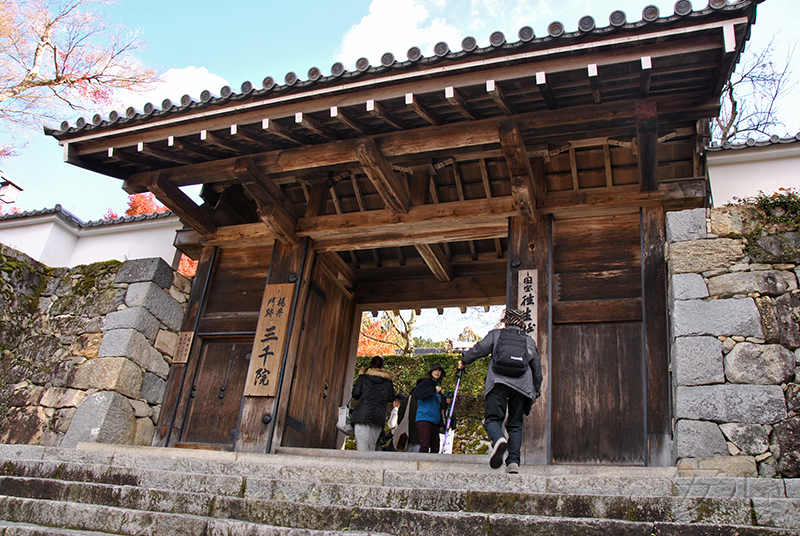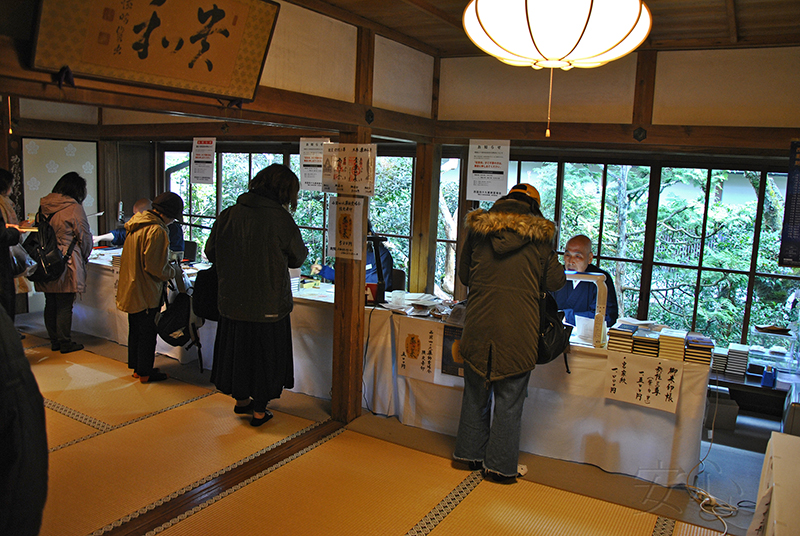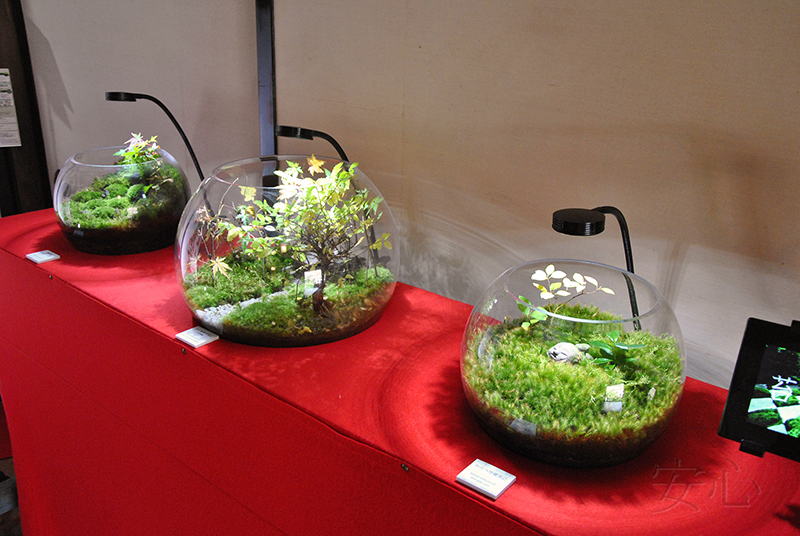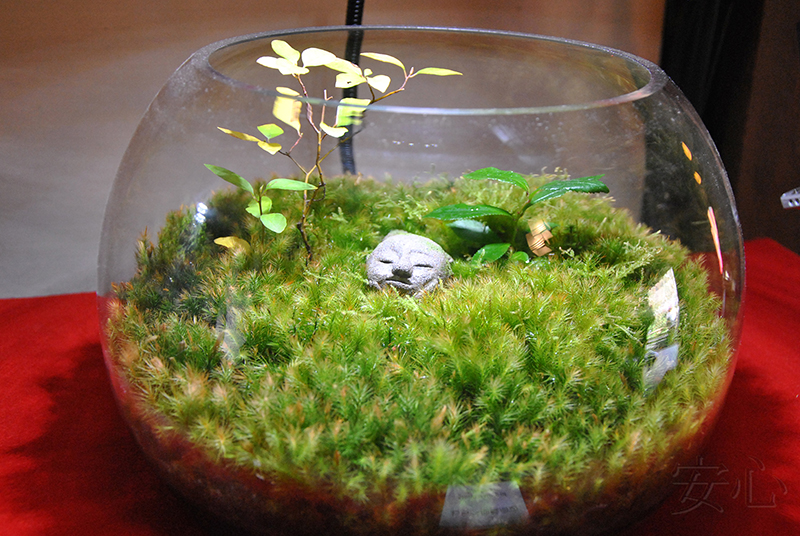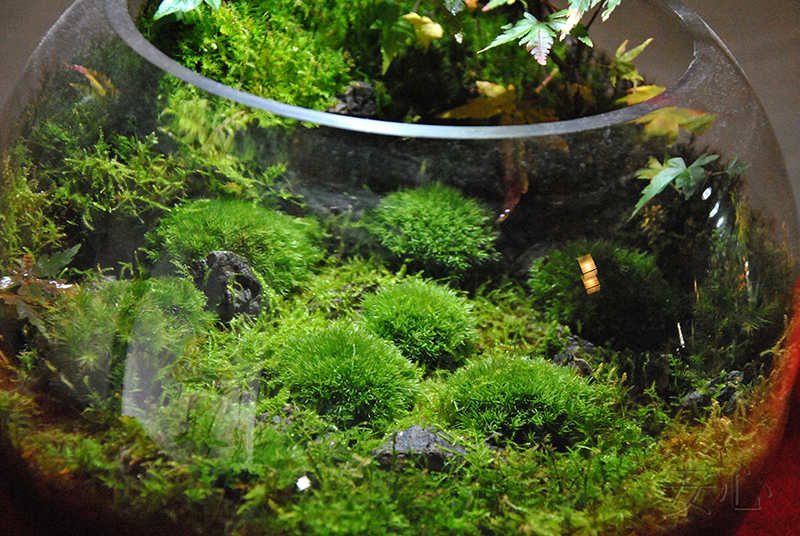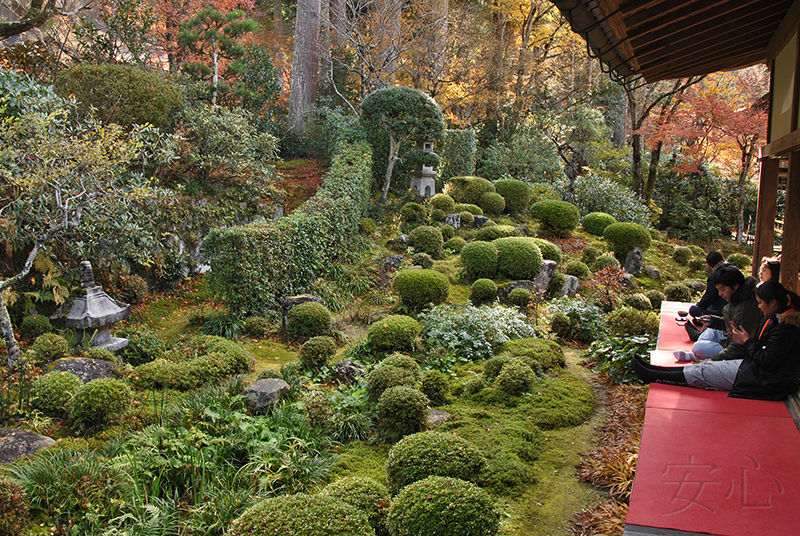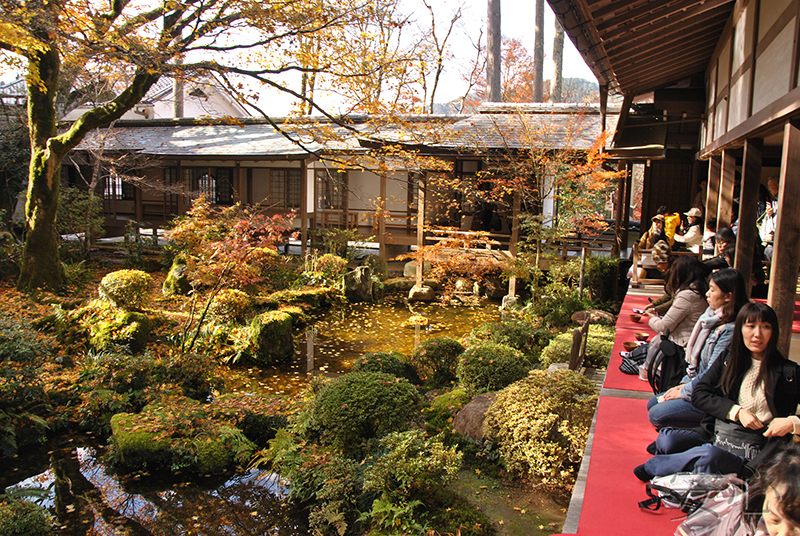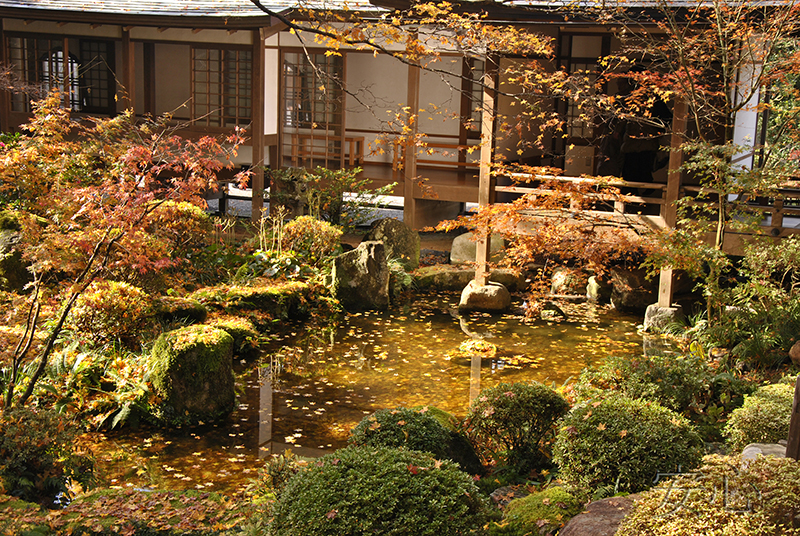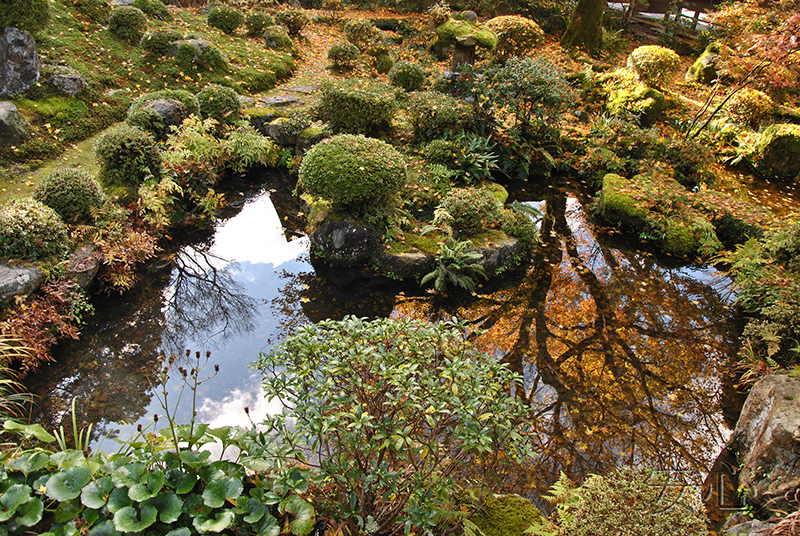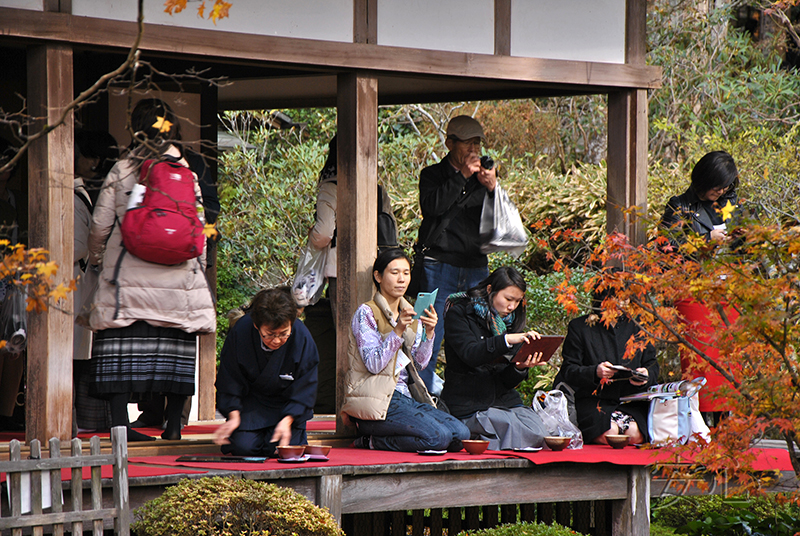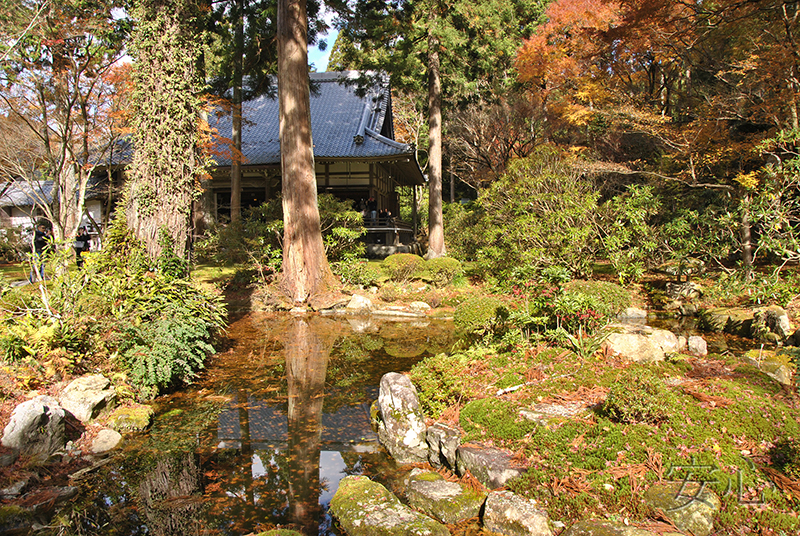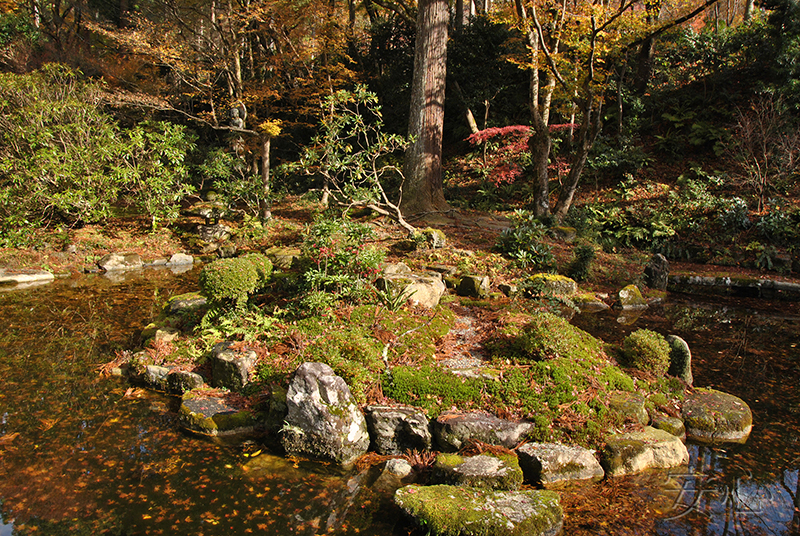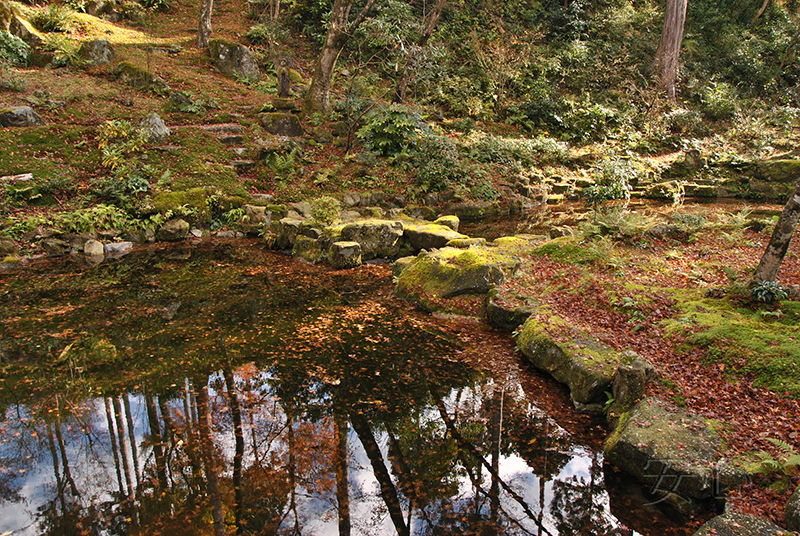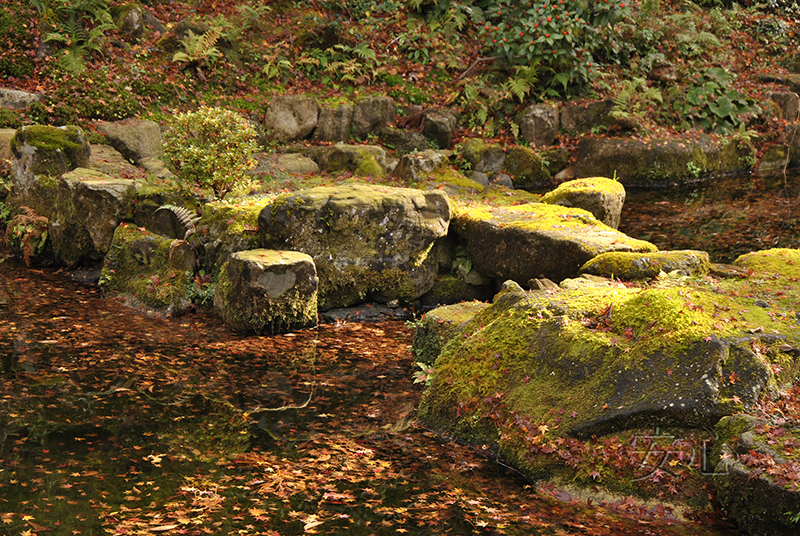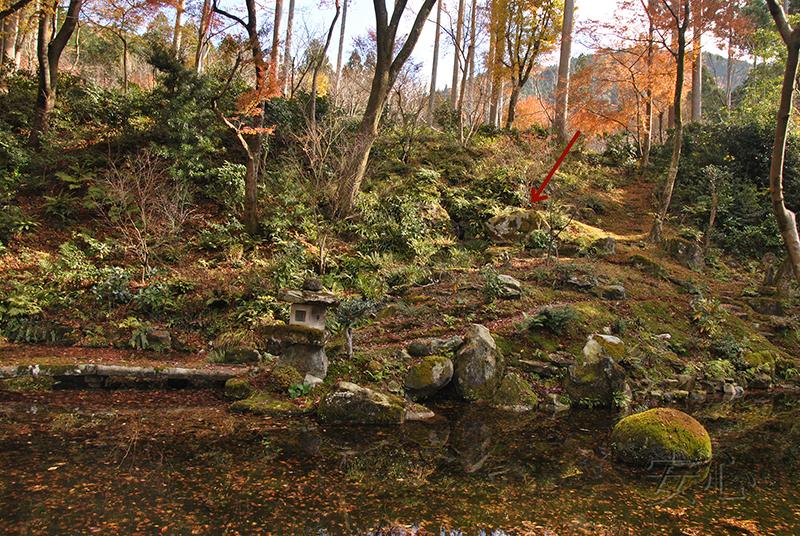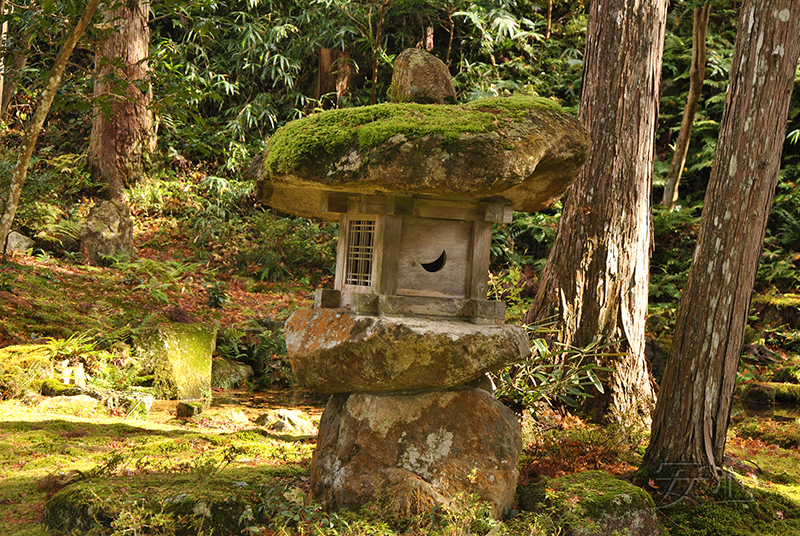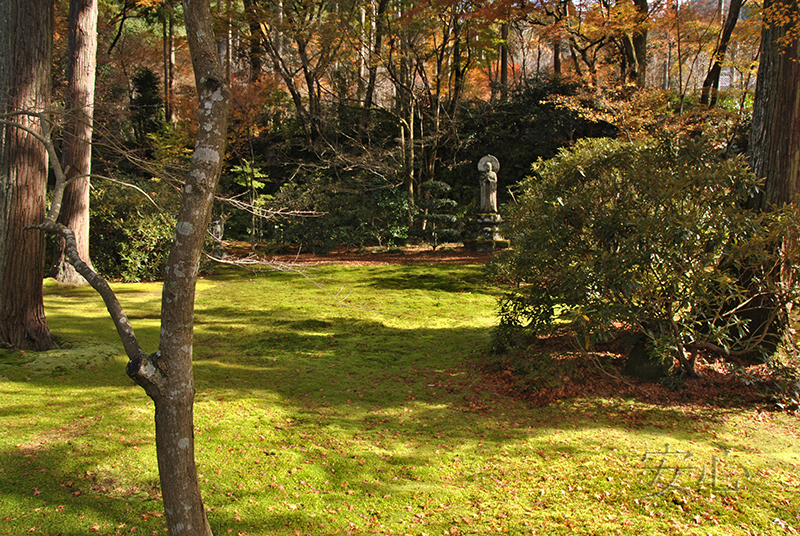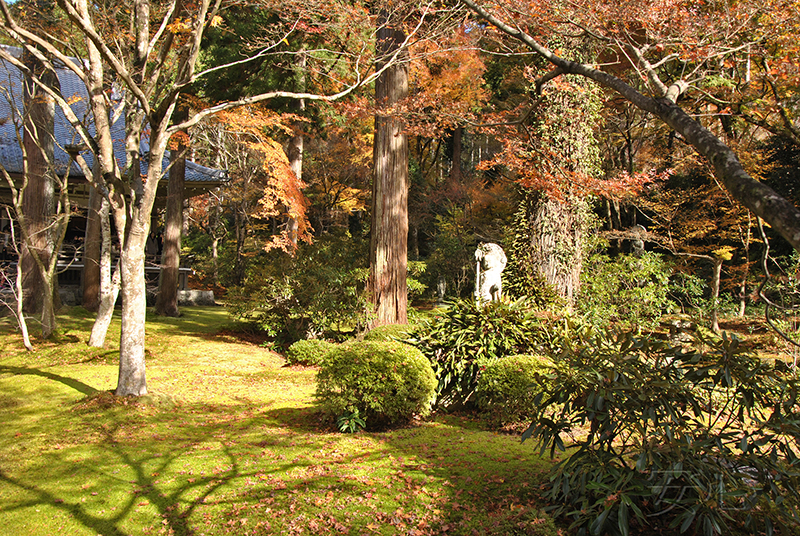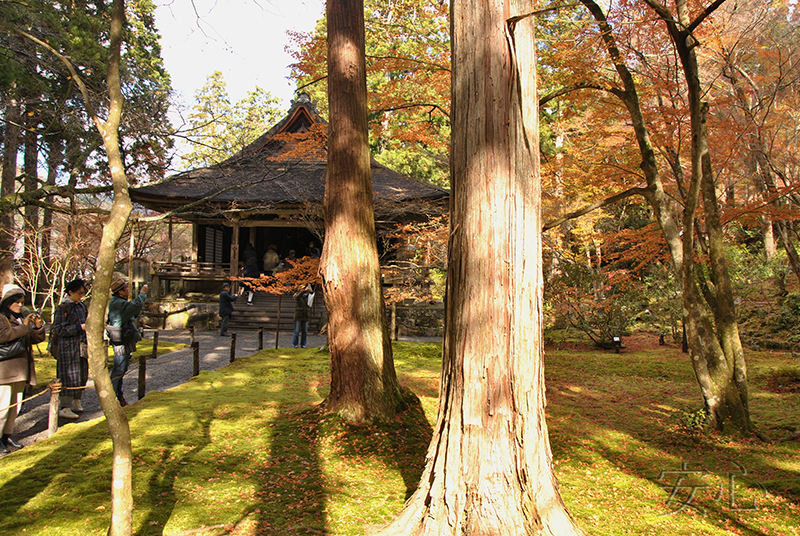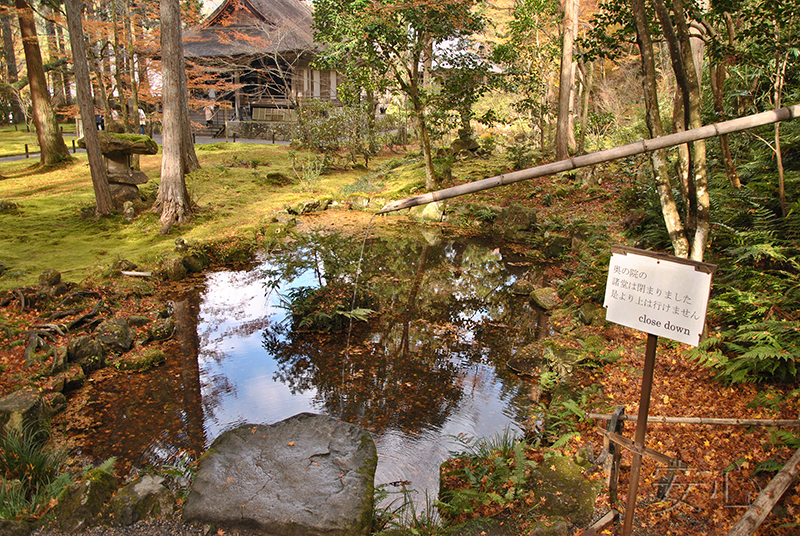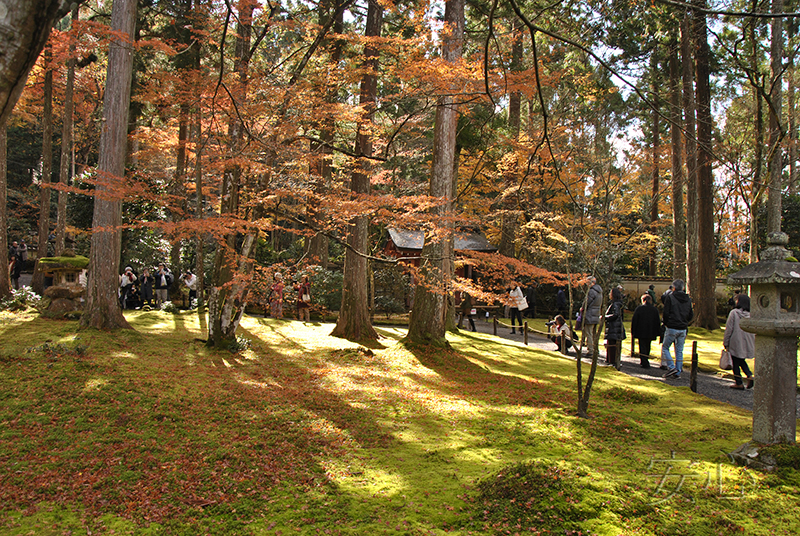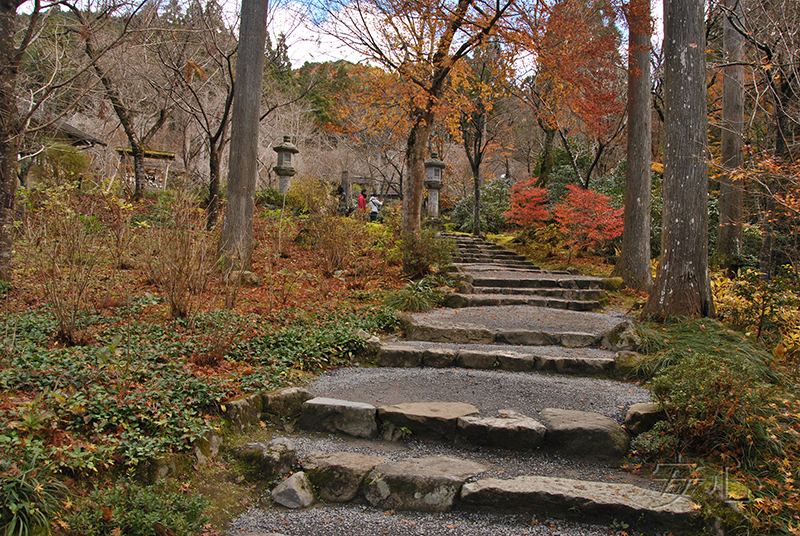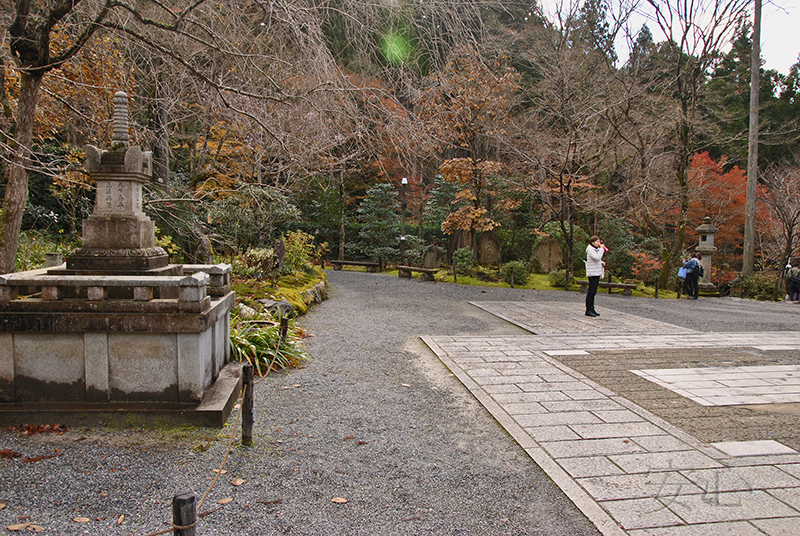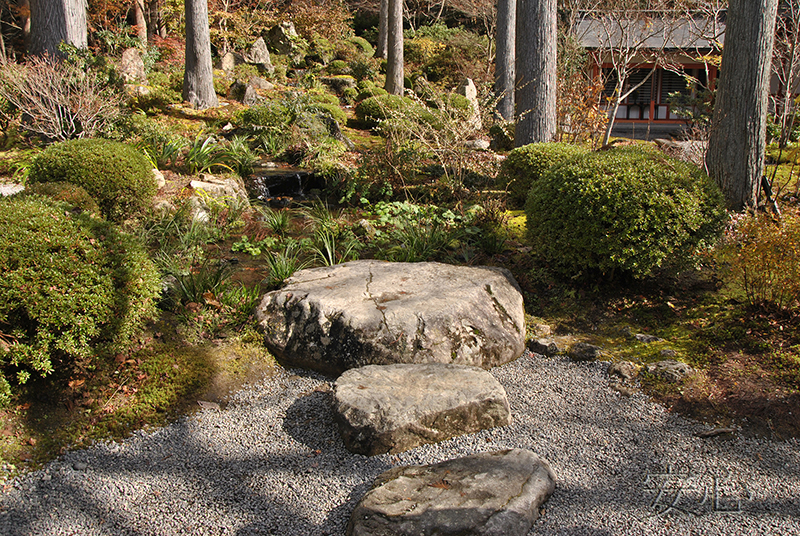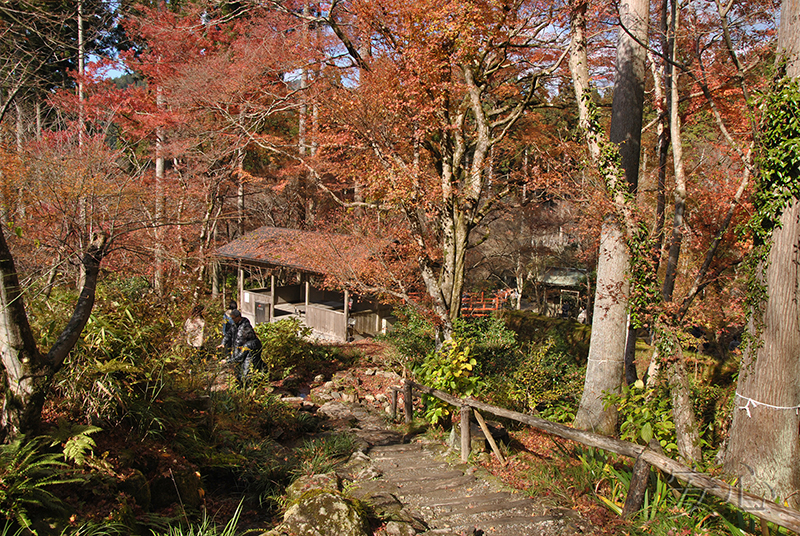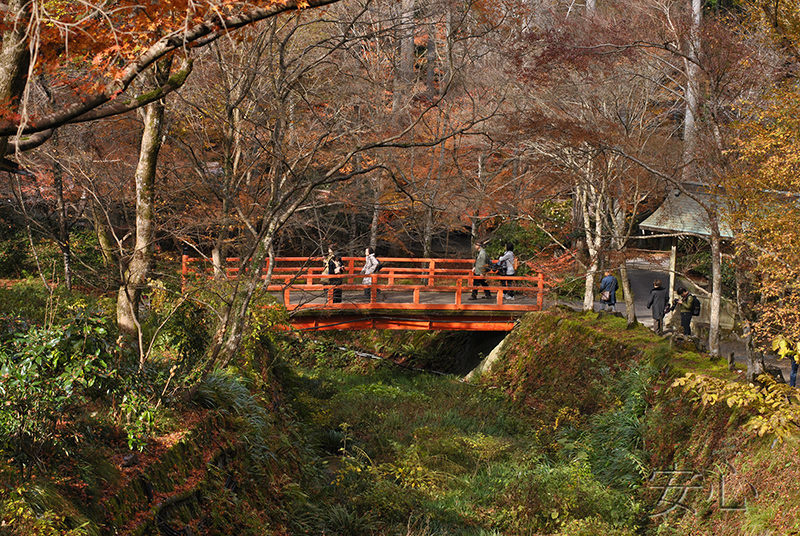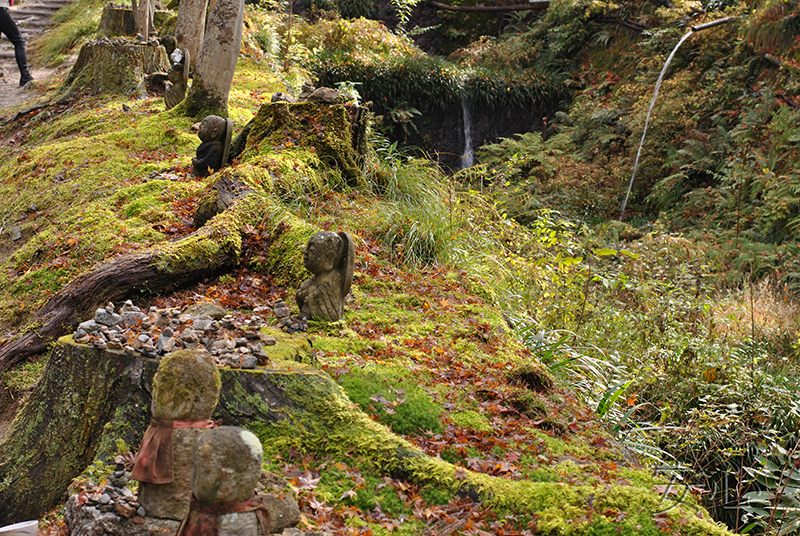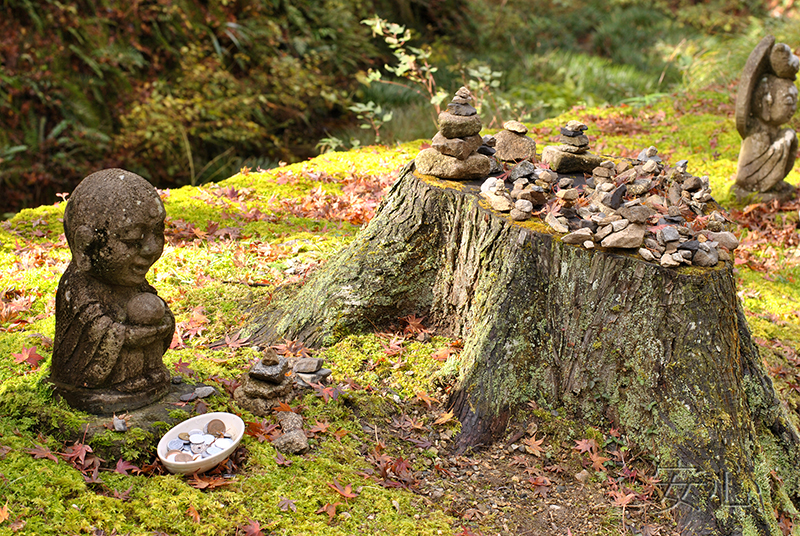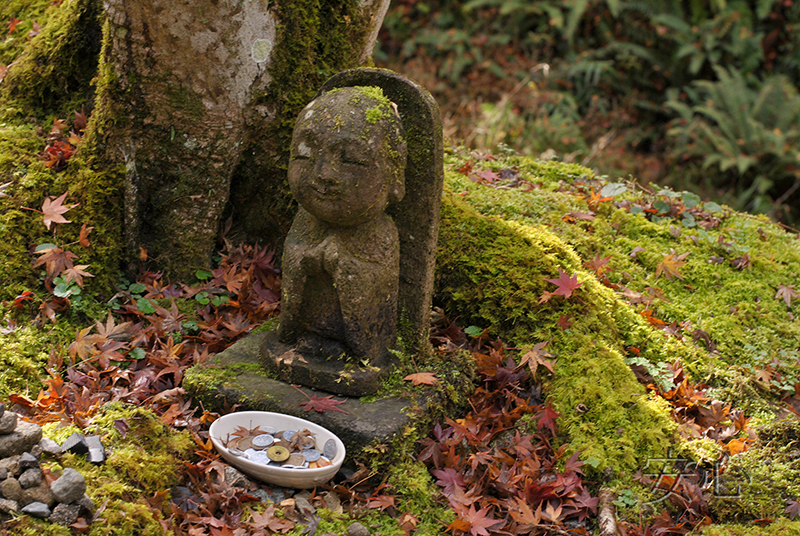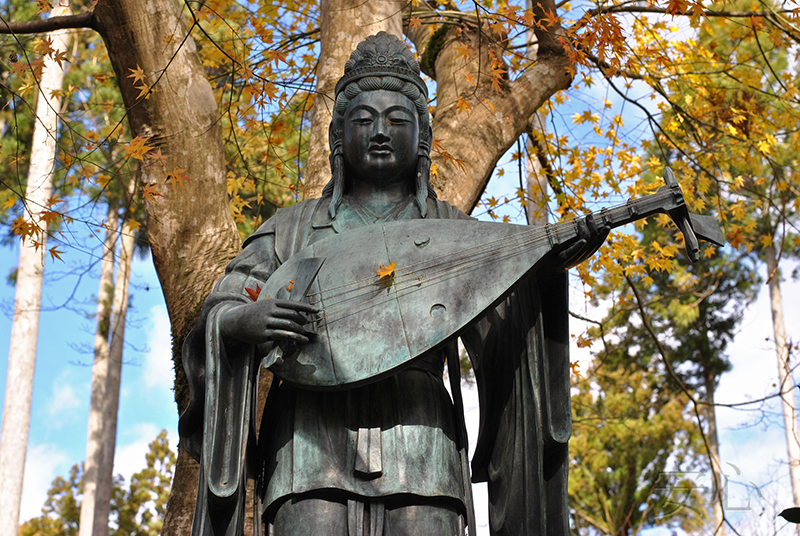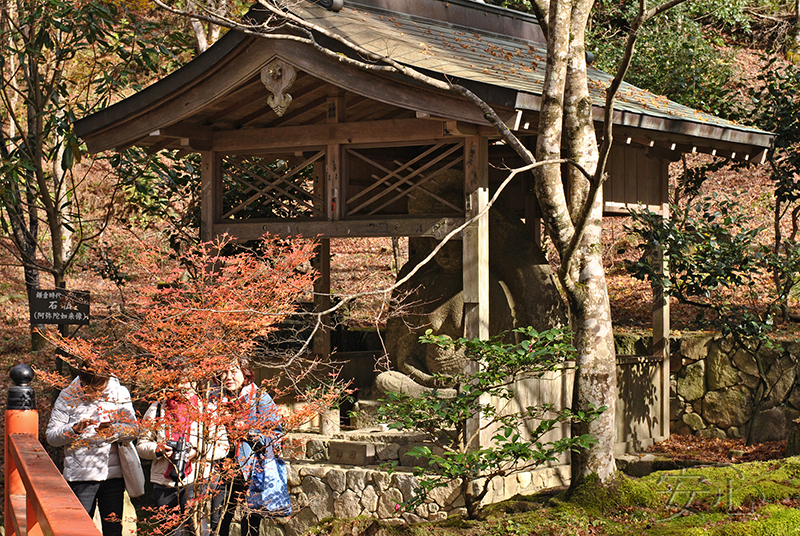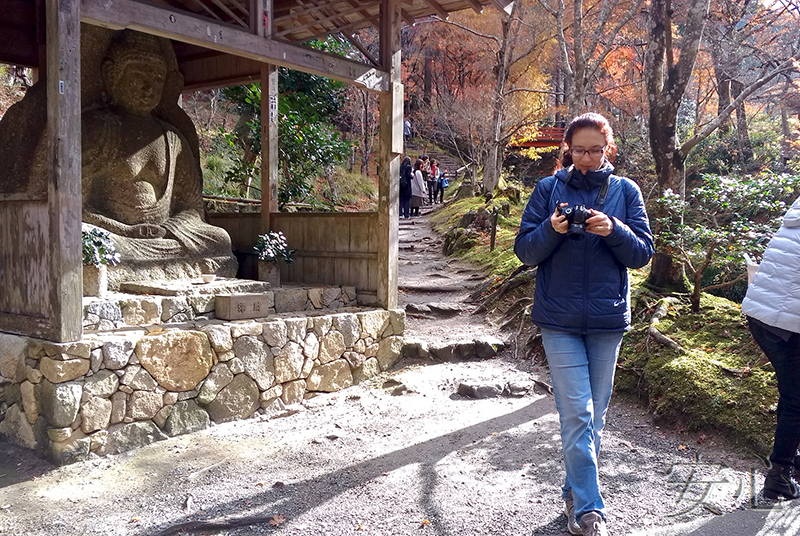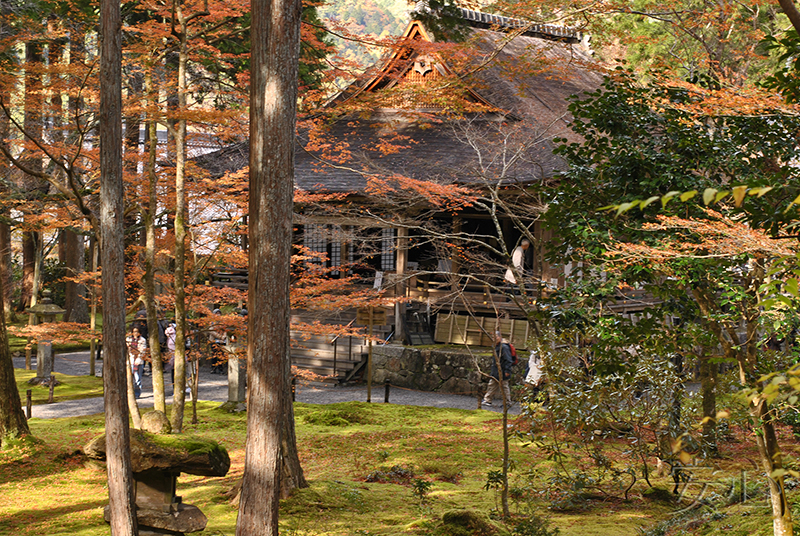
Sanzen-in temple gardens
After sixteen days in Japan, full of impressions from visiting gardens and temples, we suddenly realized that much of what we saw begins to merge into a single whole, losing its sharpness and uniqueness. Of course, it is not because of gardens, but because of my wrong planning. At home, it seems that for each day in the trip you need to plan as much beauty as possible. And this is correct if you go for seven to ten days. But if you plan to stay in the country for a month, such method will not suit. You need “empty” days, when you can just walk around the city, look at houses, streets, people and to think about what you saw yesterday.
So we decided to break our schedule, and to go outside the city, high to the mountains in the north of Kyoto. Sanzen-in Temple is the main attraction of the rural town of Ohara. This area has been known since ancient times as the birthplace of Shomyo (Buddhist sutra chanting) and known as a sacred spot in the belief of Jodo (Pure Land Buddhism). Sanzen-in is one of the five Tendai Monzeki temples, and certain members of the imperial family served here in the priesthood throughout the temple’s history. It was originally established as a hermitage by Saicho in 804. Until 1871, the temple was called as Kajii Monzeki or Nashimoto Monzeki, and only then received its current name.
But, of course, it was not its historical significance that attracted me to this temple, but the mysterious photos of a simple building surrounded by forests that I found on the net. The sight was so mesmerizing that I really wanted to go there, see it with my own eyes. But I did not include this temple in my plans, since it was a long way to get it, so it needed all day. At home it seemed a crime to plan for the day only one temple. However, as I mentioned above, we wanted to slow down the pace of the journey, and the trip to Ohara turned out to be a great idea, this is a walk, a new beautiful place, and the fulfillment of an old dream.
We took the subway to the Kokusaikaikan station (the end of the Karasuma line), and then went by bus to the mountains. Then we had to walk along the road. It was late November, the time for red maples, and these places were stunningly beautiful.
There were a lot of people, we especially liked one visitor who came with his pet.
Besides Sanzen-in, there are other temples here, and at first we approached Shorin-in. But we were afraid that we would not have enough time and decided not to go inside.
We constantly stopped to admire beautiful views.
Finally we reached the massive entrance gate Goten-mon, surrounded by high stone walls. This is the unique style of monzeki temples. In the autumn 2003, this gate was restored.
The tiles on the ends of the roof are decorated with a noble chrysanthemum pattern with sixteen petals, the emblem of the imperial family.
The first large building is the Kyakuden (guest hall), which houses Japanese calligraphy and paintings on sliding doors (fusuma). You can also buy books and calligraphy supplies here. But, of course, it's all in Japanese.
In one of the passages, we saw a small tsubo garden. On a small hill there are three stones and several stems of graceful bamboo. The remaining area is covered with gray pebbles.
In one of the rooms our attention was attracted by pretty miniature gardens in glass florariums.
In the first one it was a stone statue of warabe-jizo. Jizos are small Buddhist statues that help people. Warabe is an outdated word meaning "child." Warabe-jizo statues help in everything related to children (safe childbirth, pregnancy, child protection).
The second garden contained a miniature replica of the Ojo-Gokuraku-in hall, surrounded by the Yusei-en garden.
In the third florarium we saw the image of the Shuheki-en garden.
Shuheki-en is a traditional Japanese garden with a small pond and hills, which can be admired from the veranda of the guest room.
Its eastern part is a two-level garden on the side of a mountain, in the upper corner of which there is a small pagoda.
In the southern part there are two ponds, round and in the shape of an elongated pumpkin.
Shuheki-en was renovated in the early 17th century by the famous tea master of Edo era Kanamori Showa.
The front seats with red cloth are for those who bought matcha tea. In the cold season, a cup of hot tea is especially relevant!
After enjoying the views of Shuheki-en, generously strewn with autumn foliage, we went to the main Temple Shinden (1918). Shinden is a place that serves as a center for Osenboko (a service with Shomyo), and was started by the Emperor Goshirakawa. The principal image of worship in this hall is the Yakushi Ruriko Nyorai (the Nyorai of Emerald Radiance), created by Dengyo Daishi. In the west room, images of successive imperial priests are kept, and in the Gyokuza Room on the east side, also called the Rainbow Room, sliding doors bear a painting of a rainbow by Shimomura Kanzan.
The main hall is opposite the Yusei-en Garden. Unlike the first one, visitors can not only admire it from the veranda, but also stroll along the pond. There are many interesting stone compositions here. We found a Turtle Island (Kame-shima). Stepping stones covered with moss lead to it.
After a little searching, we found the island of the Crane (Tsuru-shima). True, it is no longer so obvious, and without a hint, I wouldn't have find this island.
There is also a dry waterfall, but we couldn't get closer, so it was difficult to see it. I marked the stone where the waterfall begins, and it ends at the bridge.
There are a lot of interesting lanterns, stone statues.
And so, finally, we came to the building that I once liked so much on photo on the Internet, Ojo Gokuraku-in. It turns out that the Sanzen-in story began with it. According to temple legend, this hall was built by a priest, Eshin Sozu (Genshin) in 987, along with his sister Anyo-ni, as a memorial to the souls of their dead parents. The shape of the ceiling of this hall as designed like the hull of a ship in order to accommodate the Amitabha Trinity (a National Treasure), which was taller than the hall itself. The ceiling is decorated with full-colored depictions of bodhisattvas and celestial maidens flying in the heavens. True, at present, almost nothing is left of this splendor.
But how beautiful this building looks through the trunks of cedars, against the backdrop of green moss and decorated with the remains of orange maple foliage!
The former main temple looks picturesque also from a distance, from a small forest pond.
Small red gate can be seen through the trees. Previously, when Ojo Gokuraku-in was the main temple, it was the main entrance gate. They are not currently being opened.
Then we climbed a wide staircase.
There are several other buildings here, such as the Golden Fudo Hall and the Kannon-do Temple. It is also very beautiful here, clean mountain air and almost no people.
There is another small garden, created in 1997 by the Kinsaku Nakane Research Institute (a famous landscape designer who is called Kobori Enshu of the Showa period). The authorship of the garden belongs to his son, Shiro Nakane. Stones and clipped plants rise up the hillside, and below a dry stream adjoins the live stream.
The territory is quite large, it is interesting to wander there. Ascents, descents, various gazebos, red bridges, waterfalls.
Tourists are looking for little jizos. In most cases, they really need to be looked for, since they completely merge with the moss carpet, hide behind tree roots or stones. But there are places where these cute figurines are gathered together, and then it becomes interesting to see each one, to find features and differences.
We also found Benzaiten (Benten), one of the seven gods of happiness in Shintoism. She is considered the goddess of luck, wisdom, arts, love, and is often depicted with biwa, the national Japanese instrument. Benzaiten is also revered as a deity of water, she distributes sacred water on the tops of the mountains, at the mountain sources.
Another interesting statue is the stone Buddha Amida, 2.25 meters high. He is also called the Charcoal Trader Buddha. This is due to the fact that at this place for the first time people began to burn coal.
Our visit to the Sanzen-in temple has come to an end, and we headed to the exit. The impressions were so strong that I would call this day one of the best days in Kyoto. The magic of this place is so great that it makes you forget about everything in the world, immerse yourself in the contemplation of endless beauty, silence and peace. We were very lucky with the weather that day, it was sunny and warm enough. But now I want to see what this place looks like in the rain, in the snow, in the summer heat or in the spring when cherry blossoms are in bloom. Other words, I really want to come here again!
Garden Information:
Address: 540 Ohararaikoincho, Sakyo Ward, Kyoto, 601-1242, Japan
Opening hours: from 9 a.m. to 4.30 p.m.
anshin©2011All rights reserved. When using the materials of the site, reference is obligatory.
Proposals for co-operation, as well as comments and suggestions on the site please send to the address: anshinsad@gmail.comtel: +7 (965) 121-80-60, 10am-20pm

